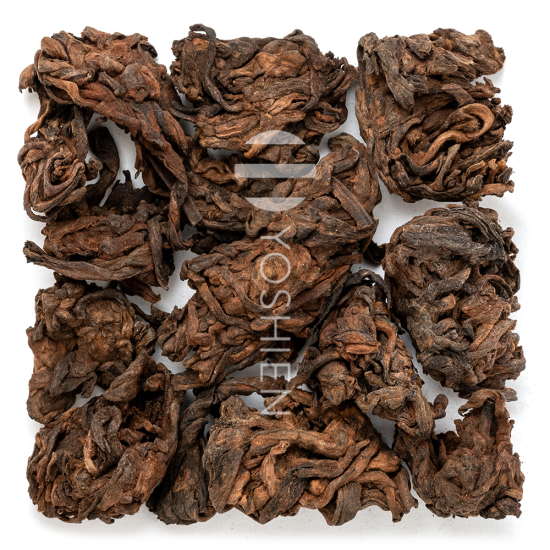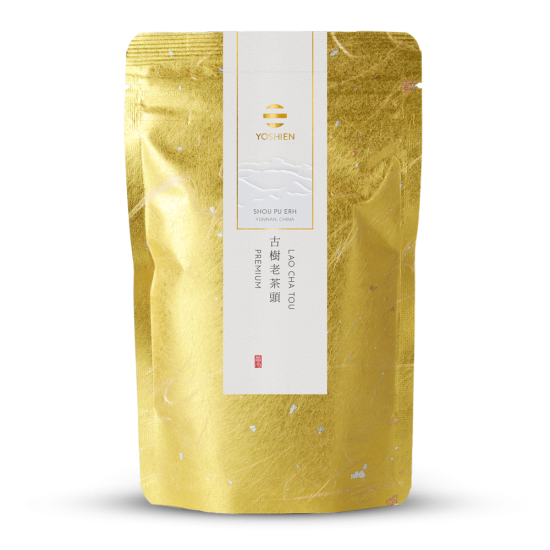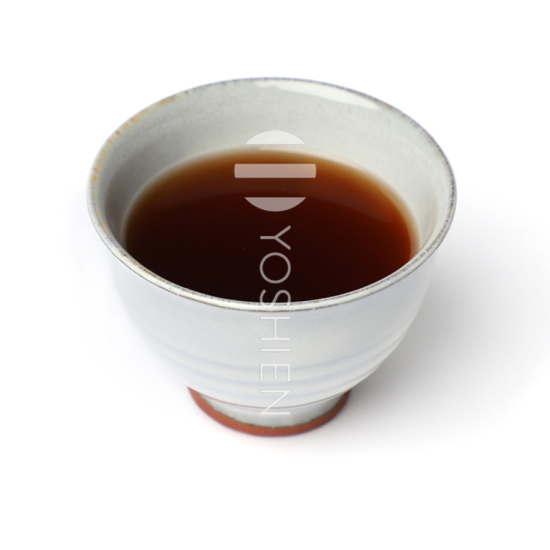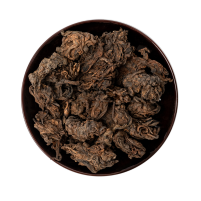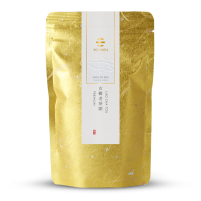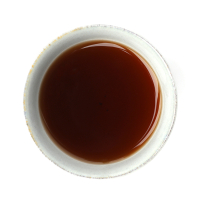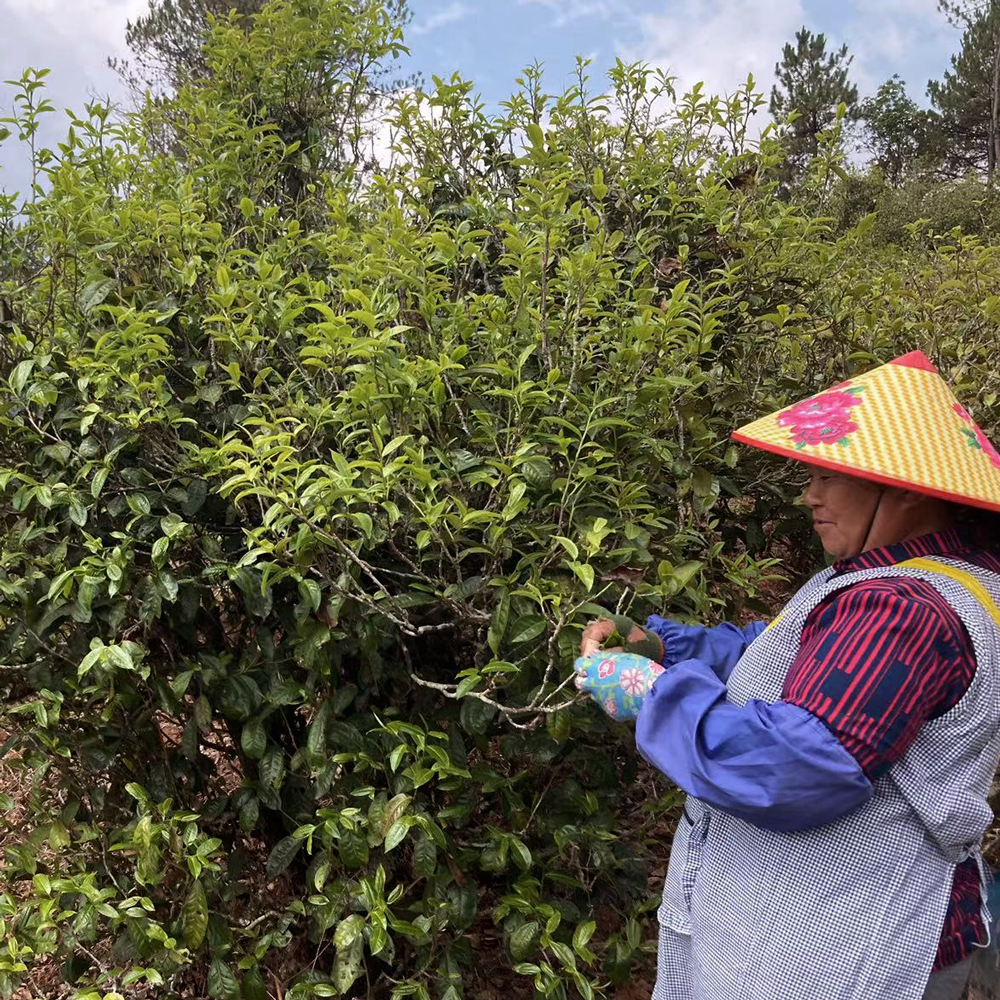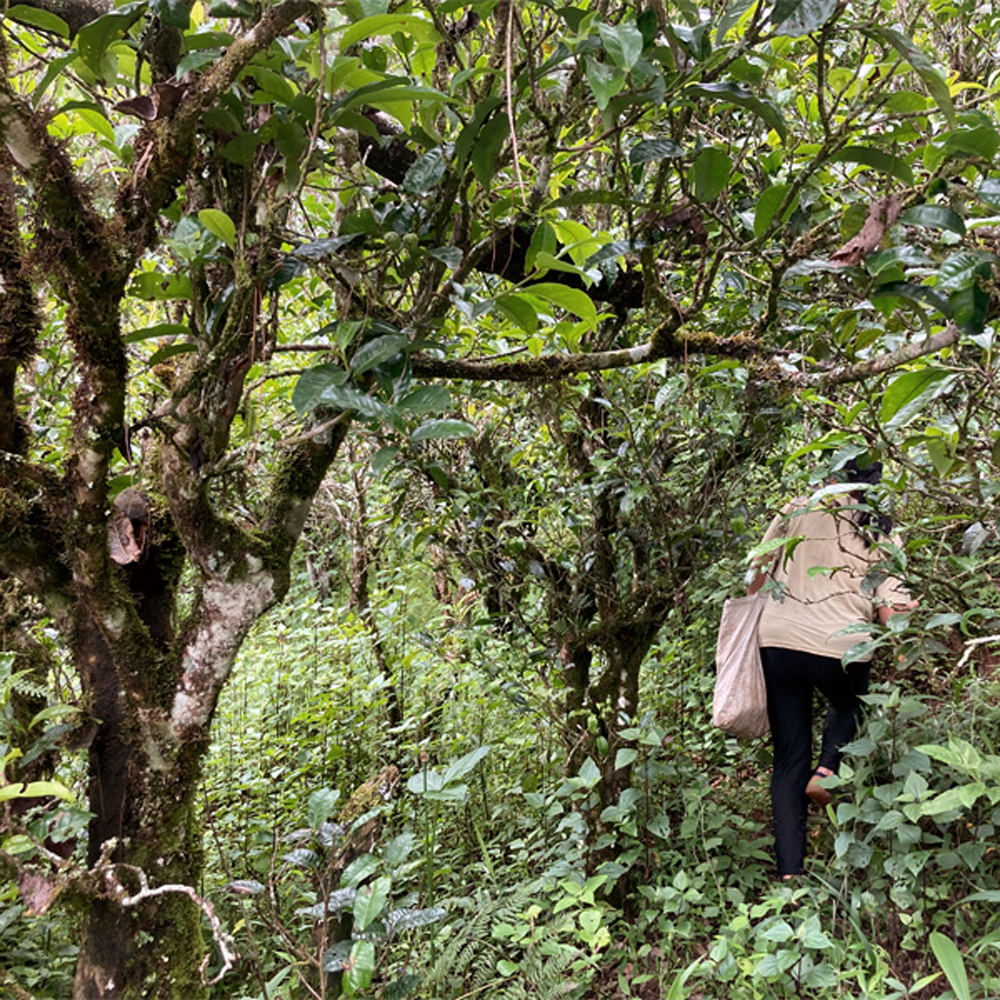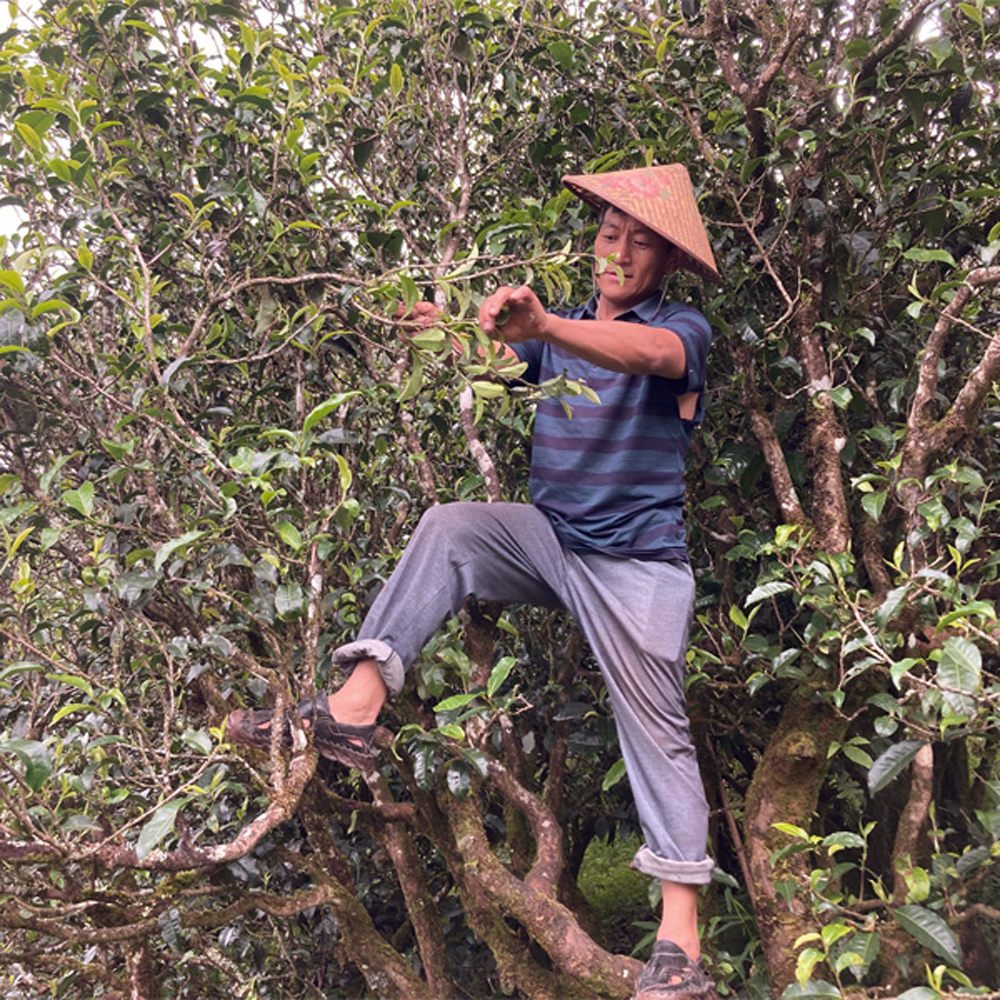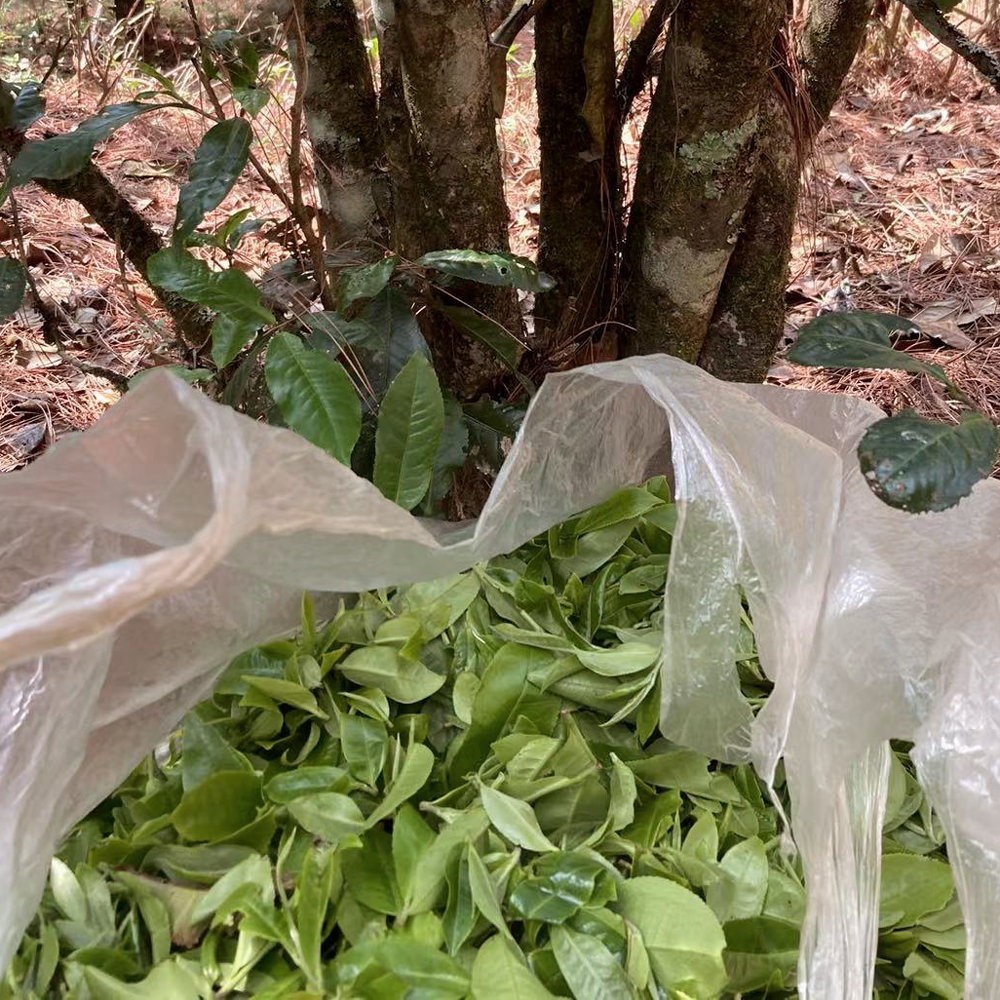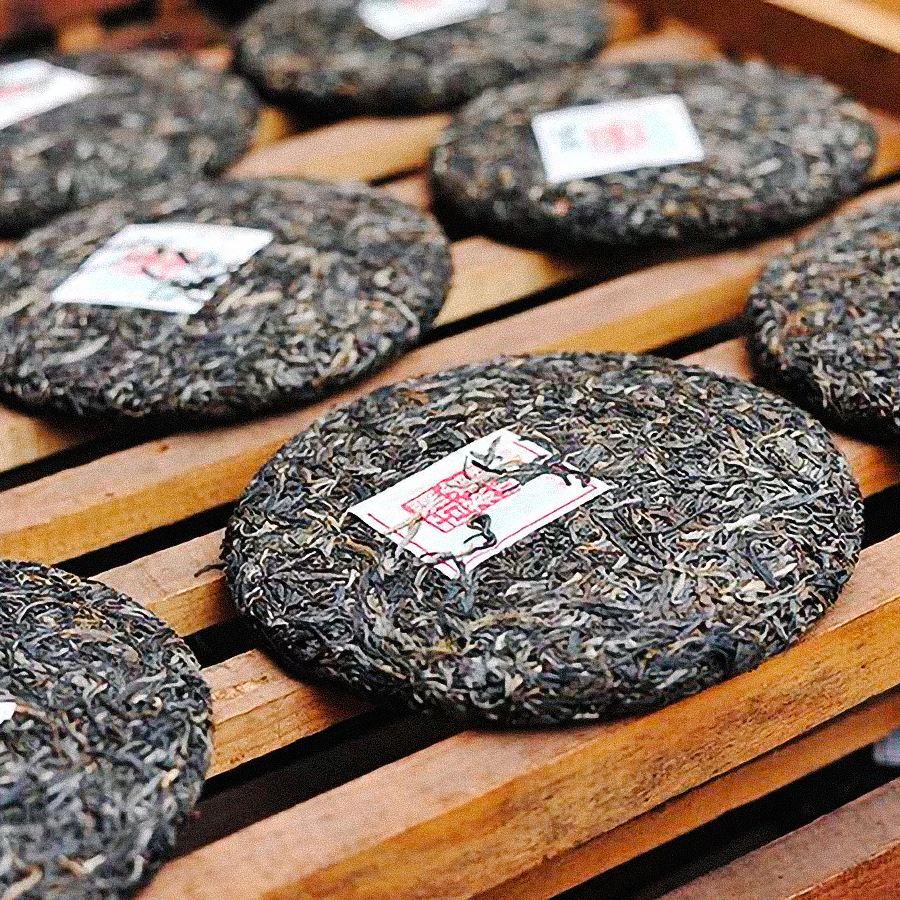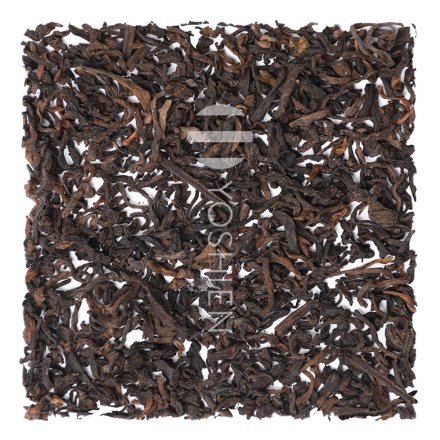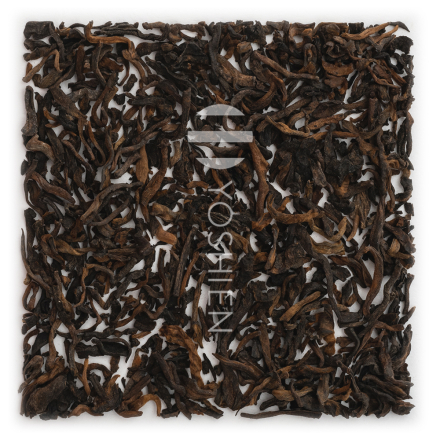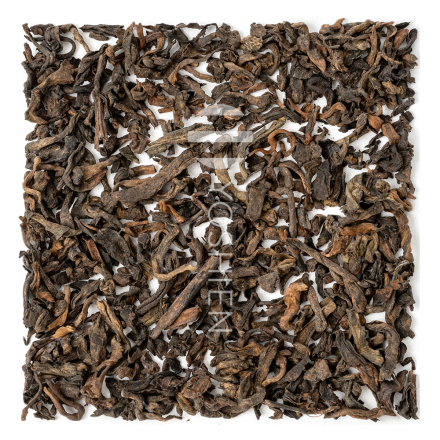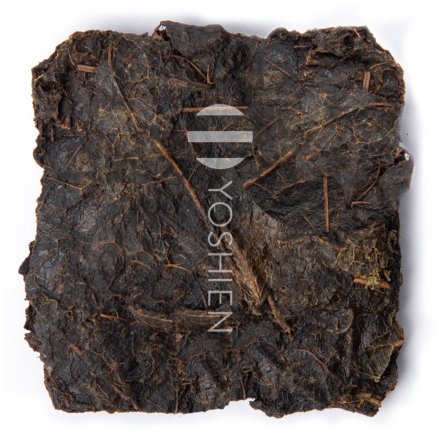Special features in location, cultivation and processing
The highlands of Yunnan have a generally mild, subtropical climate, even at higher altitudes. This is due to the predominantly south-facing slopes, which are strongly influenced by the climate of the Indian Ocean and the Pacific. Harvesting sometimes requires the use of ladders to reach the upper tips of the tea trees, as seen in the images of the tea farm. Generally only the buds and the following two leaves are picked.
The tea is first withered outdoors under intense sunlight. The oxidation process is then halted by "Kill Green", in which the tea leaves are heated or roasted in a wok. After this, the tea is spread out again in the sun for further drying. The next step is what defines Shou Pu Erh tea: the piling and fermentation process. For this, the tea is stacked for 45 days, sprayed with fresh mountain spring water, and then covered. Throughout these 45 days, the tea is regularly turned and aerated to allow oxygen to circulate. During this time, in the lower layers of the pile, Lao Cha Tou – tea nuggets – are naturally formed. After fermentation, the tea undergoes a final drying process, followed by a careful selection in which Lao Cha Tou is separated from the conventional tea leaves.
Centuries-old Pu Erh tea trees
The tea plants needed for producing Pu Erh are autochthonous, large-leafed, and wild-grown tea plants. In contrast to generic tea plants grown around the world, this type does not grow as a bush, but rather as a tree that can live for up to thousands of years. Scientific studies of the Camellia taliensis suggests that this tree is the common ancestor of all other types of tea. This cultivar is native to the region where China, Vietnam, Laos, and Myanmar meet. This is also where the Chinese province of Yunnan is located, and the history of Yunnan is also intertwined with the first known attempts to cultivate tea. For this reason, Yunnan is often considered the "cradle of all teas". In the tea forest of Yunnan, each tree has an individual character with a different shape and different cultures of moss and fungi. As such, each tree produces its "own" tea. The older the tree, the deeper its roots extend into the earth and into deep layers of rock and stone. These older trees can absorb minerals and trace elements that are passed on to the leaves and buds. The tea made from the buds and leaves of wild-grown older trees is thus rich in minerals and highly desirable.



